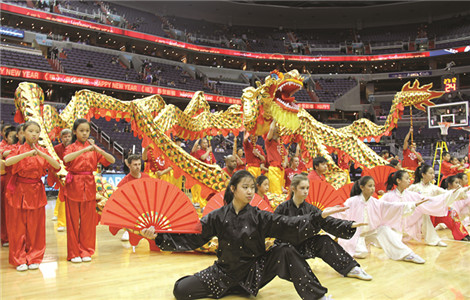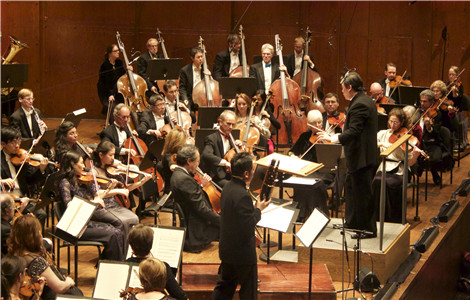A Portrait Of The Silk Road
Updated: 2015-02-25 07:27
By Xing Yi(China Daily)
|
|||||||||
A photo album replete with travelogues has been published after its author retraces the ancient route. Xing Yi reports.
When Hu Bin embarked alone on western China's Silk Road from Central China's Henan province as a college sophomore in 1990 - with a few hundred yuan and a camera - he had little inkling his journey would resume a quarter of a century later.
Or that he'd return last year as a journalist and photographer, and publish a book afterward.
He made it to the Xinjiang Uygur autonomous region's Karamay city 25 years ago before his cash ran out.
Hu joined more than 40 journalists in 2014 to drive from the Silk Road's starting point, Shaanxi province's capital Xi'an, to the terminus, Rome.
He photographed, and reported on, the people and cultures along the ancient trade route that enabled East to meet West millennia ago.
The Magnificent Scenery of the Silk Road contains more than 200 images selected from more than 10,000 photos, plus 50 travelogues.
"The Silk Road isn't merely a trade route," Hu said at a Feb 4 book launch.
"It's also a bond of friendship, a gallery of nature and a display of cultures."
The 54-day media tour took him through more than 30 cities and a dozen UNESCO World Heritage sites in eight countries.
The book reveals images of, and stories from, the Guri Amir mausoleum in Uzbekistan's Samarkand, balloon rides in Turkey's Cappadocia and Mediterranean ferry journeys.
Hu squeezed out time to write notes of every day's travels after reporting. They became the photo book's narration.
"The daily travelogues supplement the photos and give readers first-person experiences, as if they're traveling with Hu along the road," China Photographic Press House editor Li Lili says.
An interesting encounter in the book is the visit to "Shaanxi village" in Kazakhstan, near the borders of Uzbekistan and Kyrgyzstan.
The Dungan branch of China's Hui ethnic group emigrated during the Qing Dynasty (1644-1911) and still lives largely as it did a century ago.
They speak Mandarin's Shaanxi dialect and wear traditional attire.
Hu recalls they threw a party for their delegation and invited them to join a traditional wedding.
"The villagers' warm welcome in a language we could understand made us feel like we hadn't left China."
Hu says local kindness helped them overcome hardships.
He recalls Uzbekistan's military helped when the media group ran out of gas in the Kyzyl Kum Desert. The response came after the group used the Internet to ask for help.
Hu believes more people will follow the route since the China National Tourism Administration named 2015 the Year of Silk Road Tourism.
He hopes his book can provide a sneak peek at what the route reveals.
Contact the writer at xingyi@chinadaily.com.cn
(China Daily 02/25/2015 page22)
Most Viewed
Editor's Picks

|

|

|

|

|

|
Today's Top News
US State Dept calls for cyber security boost
Anbang buys new piece of Manhattan
California here we come: Chinese
Port dispute over, shelves take time to restock
School, firm to link up in cancer fight
Killer of 'American Sniper' Kyle jailed for life
Alaska quietly becomes 3rd US state to legalize marijuana
Highly skilled immigrant spouses can soon work in US
US Weekly

|

|
















